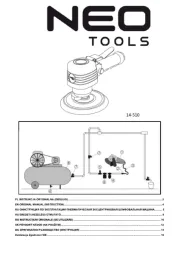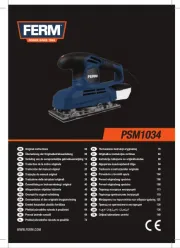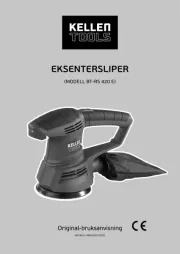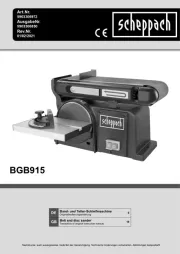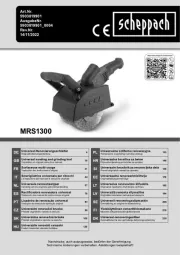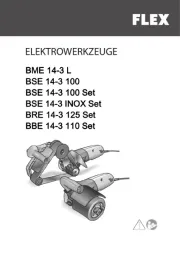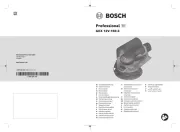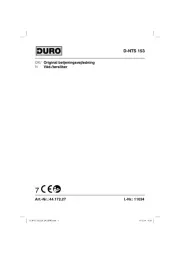
Read and understand all instructions.
Failure to follow all instructions listed
below, may result in electric shock, fire
and/or serious personal injury.
1. Keep your work area clean and well lit.
Cluttered benches and dark areas
2. Do not operate power tools in
explosive atmospheres such as in the
presence of flammable liquids, gases,
or dust. Power tools create sparks
which may ignite the dust or fumes.
3. Keep bystanders, children and visitors
away while operating a power tool.
Distraction can cause you to lose
1. Avoid body contact with grounded
surfaces such as pipes, radiators,
ranges and refrigerators. There is an
increased risk of electric shock if your
2. Don’t expose power tools to rain or wet
conditions. Water entering a power tool
will increase the risk of electric shock.
3. Do not abuse the cord. Never use the
cord to carry the tool or pull the plug
from an outlet. Keep the cord away
from heat, oil, sharp edges or moving
parts. Replace the damaged cords
immediately if you found one. The
damaged cords will increase the risk of
hen operating a power tool outside,
use an outdoor extension cord which
marked “W A” or “W”. These cord- s are
rated for outdoor use , so it can reduce
the risk of electric shock.
1. Stay alert, watch what you are doing
and use common sense when
operating a power tool. Do not use the
tool while tired or under the influence
of drugs, alcohol, or medication. A
moment of inattention while operating
power tools may result in serious
2. Dress properly. Do not wear loose
clothing or jewelry. Contain long hair.
Keep your hair, clothing, and gloves
away from the moving parts. Because
loose clothes, jewelry, and long hair
can be caught in the moving parts.
3. Avoid accidental starting. Be sure
switch is off before plugging in.
Carrying tools with your finger on the
switch or plugging in tools that have
the switch on will invite accidents.
4. Remove adjusting keys or wrenches
before turning the tool on. A wrench or




